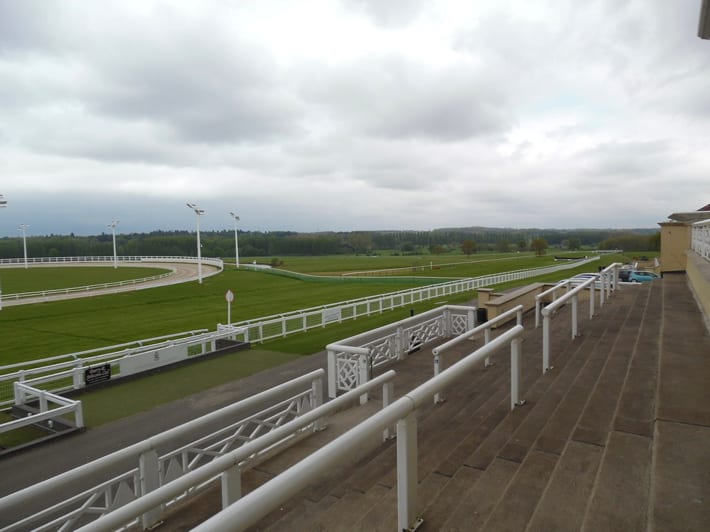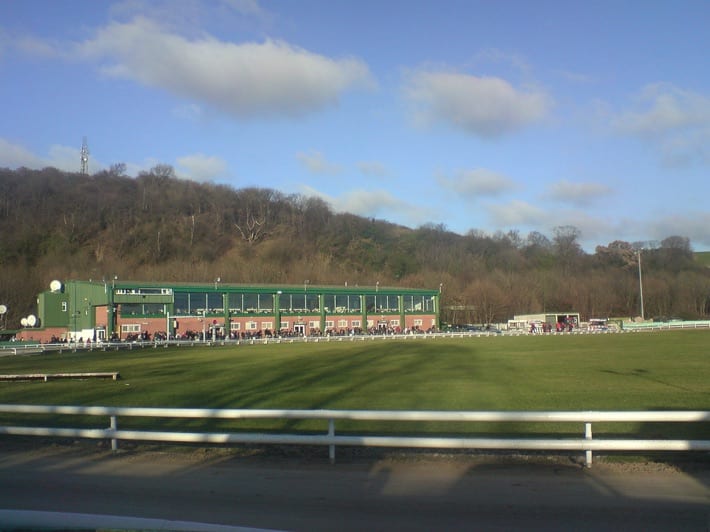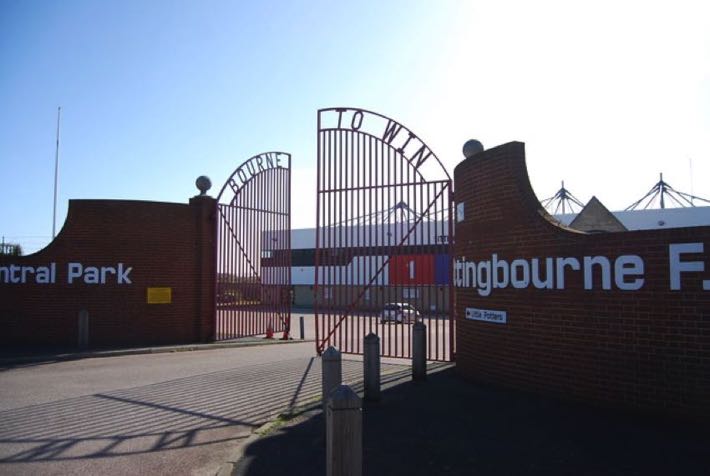
Had this piece been written even as recently as twenty years ago, there would be a wealth of dog tracks to tell you about across the United Kingdom. Nowadays, unfortunately, it’s more of a piece that could have been entitled ‘These Are Your Only Options If You Want To Go To The Dogs’. At one point it was one of the most popular sports in Britain, but a combination of the way we socialise and how people bet has seen it decline markedly.
This sense of the sport being in decline was brought to a head with the closing of Belle Vue stadium in August of 2020. The venue that was thought of as being the home of greyhound racing was shut permanently by its owner, Arena Racing Company, who felt that there was ‘no longer a business case’ to support its ongoing operation. There are still some venues operating, though, so we’ll look at the best ones here.
The Decline of Greyhound Racing
Before we look at the best dog racing tracks that are still open, it’s worth considering why the sport has declined in interest so much. It’s no exaggeration to suggest that the sport was the second-most popular in the country at its height, with as many as 34 million people heading to tracks to watch dogs race in 1934. Yet by 2019, that figure had dropped to less than two million visitors over the course of the year.
As with so many things that cease to be as popular as they once were, there is no simple, one-size-fits-all explanation about why greyhound racing lost its popularity. The sport had been declining since the 1960s, which was the moment that off-course betting became legal and more forms of entertainment began to become the norm in the UK. The 1960s also saw an increase in liberal thinking and a dislike of the way racing dogs were treated.
There was also the fact that greyhound racing tracks tended to be located in inner-city industrial areas that were becoming rundown by the Conservative government of the 1980s. With 77 licensed tracks in 1946 and 200 or more unlicensed ones, there were plenty of options. Today there are fewer than 19 licensed tracks and only three independent ones, showing just how much they were hit by changing fortunes.
The Best Stadiums Still Operating
Now that we understand a little bit more about the decline in greyhound racing, it’s worth having a look at the best stadiums that are still in existence. If you wish to attend a dog racing meeting then these are the top tracks that you’ll want to head to. Sadly, some of the best-known and most loved tracks, such as the aforementioned Belle Vue and the ever-popular Walthamstow Greyhound Stadium are no longer in operation.
Towcester Greyhound Stadium

There are many reasons why Towcester Greyhound Stadium is popular, but perhaps somewhere high on the list is the fact that it staged something of a phoenix rising from the flames style recovery when it looked all but doomed. In October of 2019, the horse racecourse at Towcester, which housed the greyhound course in its centre, closed permanently after going into administration the year before, with all remaining fixtures being sold.
The greyhound track had only opened in 2014, when it had become the first course since Harlow and Sittingbourne in 1995 to open. It had cost £1.5 million, with 60,000 tonnes of soil needed to allow the greyhound course to meet the horse racing home straight at a level point. Kennels had been constructed inside unused horse stables, with the entire project making use of its natural location.
A lease for the course was eventually signed in October of 2019 by Kevin Boothby, with racing returning to it in May of 2020. The likes of the Puppy Derby, the English Greyhound Derby and the Oaks all take place at Towcester, which is part of the course’s appeal. Boasting wide bends that allow for as many as eight dogs to race, it is a course that allows for exciting races to take place and therefore encourages visitors.
Nottingham Greyhound Stadium

When Towcester Racecourse went into administration and was seemingly unable to operate, the English Greyhound Derby was moved to Nottingham Greyhound Stadium. That should give you some idea of the prestige in which the course was held, with many considering it to be the finest such venue left open in the country. That it had been granted a new 50-year lease to operate in 2018 also suggested that it wasn’t planning to go anywhere.
Little wonder, then, that it is known as the home of greyhound racing in the East Midlands. The lease allowed a degree of investment and long-term planning, helping the stadium to improve the facilities that it offers visitors. It is also a much-loved venue on account of the fact that it is located two miles from the centre of Nottingham, meaning that it is easily accessed by those who wish to spend their afternoons or evenings watching the dogs.
The Select Stakes is one of the main races to be run at the venue, as is the British Breeders Stakes. These top-class races promise a wealth of talent for visitors to watch, allowing locals to get to know the up and coming dogs as well as to watch the ones that have already made a name for themselves in the business. Boasting three bars and a number of excellent restaurants, it is able to cater to most visitors in the best manner possible.
The 50-year lease being signed allowed the racecourse to invest good money in bringing the facilities up-to-date, which was one of the only complaints about it prior to that. With the main meetings taking place on Friday and Saturday nights, Nottingham Greyhound Stadium has found a new lease of life thanks to its popularity with the city’s students. A city that has always enjoyed a good nightlife, the greyhounds puts another string in its bow.
Owlerton Stadium

Sheffield is a sporting city, with the likes of Sheffield United and Sheffield Wednesday Football Clubs always welcoming thousands of visitors into the city. Located close to Sheffield United’s stadium, Owlerton Stadium in the Hillsborough part of the city is one of the biggest greyhound racing tracks in the United Kingdom. It is able to host as many as 4,000 people per meeting, first opening its doors in 1929.
Since then it has gone from strength to strength, undergoing a refurbishment in 2019, which included the building of the glass-fronted Panorama Restaurant. A venue that is steeped in history, it is not only used for greyhound racing but also to host meetings of the Sheffield Tigers Speedway team. BriSCA Formula One stock car racing is also held at the racing, meaning that there’s a wealth of options in terms of getting a sporting fix.
It’s the greyhound racing that we’re most interested in, of course, with racing taking place every Monday, Tuesday, Thursday and Saturday. The 2019 opening of the new conference centre and executive suites mean that the venue’s future is all but assured, so the likes of the Steel City Cup, the Northern Sprint and the Puppy Cup will be seen there for years to come. It is one of the most loved greyhound stadiums still in operation.
Doncaster Greyhound Stadium

Such is the sense of rivalry between Sheffield and Doncaster that the former can’t do much without the latter responding. Stainforth Stadium opened its doors as a speedway track in 1929, but the speedway company went into administration the year after. The Stainforth Amateur Athletic Club bought the venue in 1933, but the outbreak of the Second World War resulted in the end of athletics. The stadium’s use was revitalised with the opening of a greyhound track in 1941.
It was an unlicensed track and remained so for another 35 years, eventually closing in 1978 and becoming derelict. It was bought in 1992 by greyhound racing enthusiast Chick Hicken and his partner June, with racing returning to the newly built track the year after. Sometimes known as Meadow Court Stadium, a contract was signed with SIS in 2018 to ensure racing would take place there every Monday, Wednesday, Saturday and Sunday.
As with so many courses, the class of the place is best displayed by the racing that is hosted there. The Yorkshire St Leger is the venue’s man race, having been inaugurated in 2004 and promising prize money of more than £12,000 for the winner. It has become one of the country’s top races, cementing Doncaster Greyhound Stadium’s place in the list of top venues to watch greyhound meetings take place in the UK.
Romford Greyhound Stadium

There are just two greyhound stadiums left open in London now, with several dozen closing their doors for the final time over the preceding years. Romford opened in 1929, offering visitors a good time and some top-class racing ever since. With a capacity of 1,700, the stadium promises a great atmosphere for everyone that turns up to watch the dogs racing there. That the course has been named the ‘best in Britain’ on several occasions speaks volumes.
One of the key things about the venue is that it has always tried to be inventive with what it offers to punters, including a brief spell in the 1930s when cheetah racing was trialled. It’s fair to say that it didn’t work out as hoped, but it’s indicative of the stadium’s attempts to constantly keep itself relevant. This is reflected in the calibre of racing that you can witness on a visit to the stadium, depending on the time of year that you go.
The likes of the Essex Vase, the Golden Sprint and the Champion Stakes are all run at Romford. It is owned and operated by the Ladbrokes Coral Group, which obviously has a literal investment in it being a successful place for people to go to watch greyhound racing. The 350 metre track allows for races of numerous distances to be run on it, with six meetings a week taking place at the venue.
Central Park Stadium

If the level of races that take place at a venue were the only thing that dictates whether it is considered to be a top-class racecourse or not, Central Park would be high on the list. Previously known as Sittingbourne Stadium, it opened in 1990 as the home of Sittingbourne Football Club. The football club’s financial difficulties mean they had to sell the stadium to the council, who in turn leased it to a company that ran greyhound meetings.
So, it was that a greyhound track was opened at the venue in 1995, with a crowd of over 2,000 people turning up to watch the racing. The track was forced to shut in 1996 when financial troubles once again reared their head, but it was re-opened later in the year by Roger Cearns, the grandson of the man who had founded Wimbledon Stadium in 1928. He began to introduce races that became well-loved to the stadium, including the Kent Derby.
The Kent Silver Salver was also introduced, then in 2012, the course won the right to host the Grand National, which was moving away from Wimbledon. Two more well-known races were added when Wimbledon closed down completely in 2017, with the Springbok and the Juvenile moving to the venue. A deal was signed with SIS to have racing at the stadium ever Monday, Tuesday, Wednesday, Thursday and Friday, securing its future.